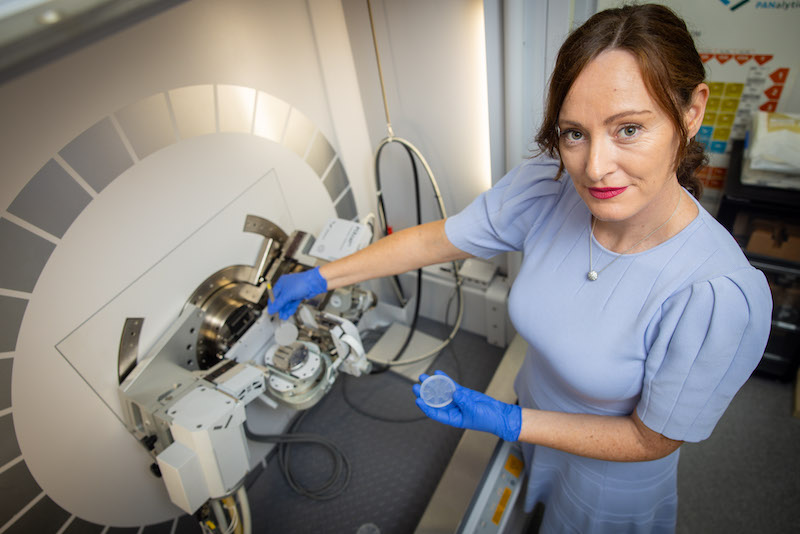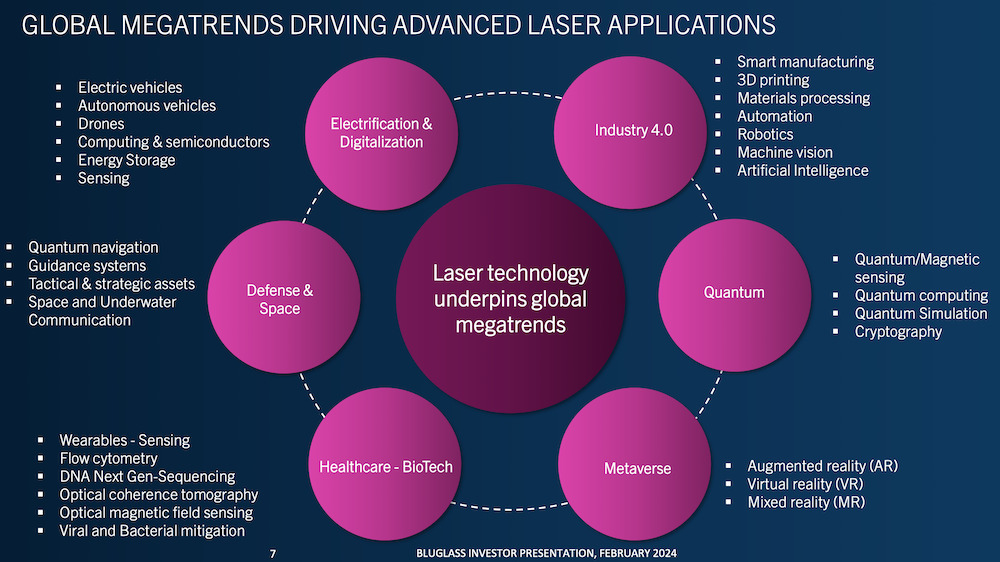You might be interested in
Tech
China kicks the semiconductor chip war up a notch as gallium and germanium restrictions come in to play
Tech
'Pick and shovel’ investing: Why Weebit Nano and these ASX stocks could profit from the AI boom
Tech
Tech
In the rapidly evolving tech landscape, the world’s attention has turned to AI and by extension, the powerful microchips which deploy this emerging technology at scale.
This has led to the huge rally in shares of chipmakers like Nvidia and Advanced Micro Devices over the past year.
But there’s another technology that’s possibly been overlooked by investors … LASER.
Lasers play several crucial roles in the manufacturing and development of microchips. They’re also extensively used in areas like automobiles, medical devices, and even aerospace.
Gallium nitride (GaN) lasers in particular represent an emerging technology with significant potential. Due to their unique properties, experts believe GaN lasers could be the enabler for the world’s next generation technologies.
ASX-listed BluGlass (ASX:BLG) is a $50m market capped company that’s definitely worth looking at in this space.
The Sydney-based company is a leading supplier of GaN lasers to the global photonics sector, an industry that’s forecast to surpass US$2.5 billion by 2025.
“A lot of the time when people think of semiconductors, they just think of chips,” said BluGlass’ director, Stefanie Winwood.
“But semiconductors actually power lots of different things, and we just happen to turn our semiconductor chips into laser, so essentially what we make is semiconductor laser.”
The company is one of just a handful of GaN laser manufacturers globally, with facilities in Sydney, Silicon Valley, and one in the Boston area.
“There’s only a tiny handful of companies that can do this in the world, and we’re one of them.
“It’s a very complicated technology and involves complex manufacturing, because GaN is one of the most difficult semiconductors to make in the world,” said Winwood.
Lasers themselves have been around since the 1950s, and traditionally, infrared is among the most widely used types of lasers.
While the efficiency of infrared laser has made it indispensable in a wide range of applications, what’s been missing from the technology toolkit, up until very recently, is the gallium nitride laser technology.
The reason why GaN lasers haven’t been widely used is because one, it’s a relatively newcomer, and two, making these lasers were simply not commercially viable.
“But now that there’s this new ability to have gallium nitride wafers, it’s become a commercially viable product,” said Winwood.
She explained that BluGlass is one of, if not the only, full suite semiconductor manufacturer here in Australia.
“We can do everything from growing the semiconductor materials. We deposit individual atoms on wafers here in Sydney.
“And then we have all the capability to take those wafers, turn them into chips, and then turn those chips into lasers.”
Winwood explained that the wafers made in Sydney are shipped to the company’s facility in the Silicon Valley, which turns them into chips and then into laser bars.
From there, the lasers are sent to a packaging facility over in the Boston area, at which point these laser devices are ready to be connected to customer applications.

GaN lasers offer several advantages over the infrared. Firstly, GaN lasers emit light in the blue and ultraviolet (UV) spectrum, versus infrared which is invisible to the human eye.
These shorter wavelengths make GaN lasers suitable for applications requiring high-precisions such as those used in quantum computing, defence, and even in the manufacture of electric vehicle batteries.
“Blue light is a visible light and so it is absorbed up to 6,000 times more efficiently than infrared light,” explained Winwood.
This means you can us GaN lasers to make smaller, more miniaturised sorts of devices like sensors, or in semiconductor manufacturing to make other chips.
“They can do that ultra precise gold and copper welding needed for chips used in electric vehicle factories, or in applications like raw material processing,” explained Winwood.
“So there are really big advantages for gallium nitride lasers, which is driving their rapid adoption over traditional laser, and opening up new markets which weren’t previously possible for infrared lasers.”
In the aviation industry for example, Boeing and Airbus are using GaN lasers in their component manufacturing.
They’re also being used in AI in products like augmented reality headsets, as well as in biotech for next generation DNA sequencing.
In quantum computing, GaN lasers are becoming a crucial input component.
“So a lot of this explosion in high technology capabilities is being driven by what gallium nitride lasers could do with their ultra high-precision, and do them at an atomic scale.
“These visible lasers are driving quantum sensing, quantum intelligence, and quantum computing, which in turn will also drive AI adoption.
“And it’s very clear that whoever wins quantum is going to win the AI market as well,” says Winwood.

But undoubtedly, the first real adopter of GaN laser technology has been the defence sector.
“GaN lasers are being used in advanced 3D printing of metals and metal construction for aviation defence,” said Winwood, adding that BluGlass has been named a hub member of the US Department of Defense’s Microelectronics Commons – the only Australian company to receive the nod.
Becoming part of this elite group enabled BluGlass to recently sign a US$1.775m ($2.6m) contract with North Carolina State University (NCSU) for laser development activity in FY24.
“That is such a big endorsement for the company from the US DoD, as there was lot of due diligence that went into the selection,” Winwood said.
Because the technology is so complex, Winwood emphasised the importance of collaboration with global industry leaders in the space.
Earlier this month, the company announced a collaboration partnership with US-based Applied Energetics, a global leader in photonics and advanced lighting systems.
This partnership will allow BluGlass to fulfil its strategic goals of optimising its architectures, increasing wavelength coverage in the lasers, and improving overall product performance.
“Applied Energetics also have customers in the US like the US Department of Defense, as well as national security and intelligence customers,” said Winwood.
BluGlass is currently in the very early stages of revenue generation, as it only launched its first product at the beginning of last year.
In its last trading update, the company reported half-year revenues of $4.17m, for a loss after tax of around -$5.9m.
The company however will be eligible for R&D tax rebate, which should help move the needle toward profitability.
Its ability to win contracts with the likes of US Department of Defense Contract could also trigger other similar contracts, which in turn will go a long way to driving revenue sustainability.
“I think BluGlass has an incredible and unique capability in Australia. Our technologies are underpinning not one, but about eight global mega trends.
“Again, lasers are only just beginning to be adopted now. And they have the potential to be one of the most critical enabling technologies on the planet in the decade ahead.
“So it’s a pretty exciting opportunity,” said Winwood.